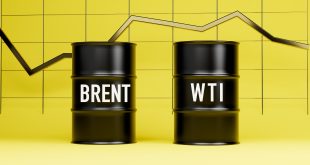Oil prices gained ground on Monday after the OPEC+ alliance confirmed a smaller-than-expected production increase for November, easing fears of an aggressive supply expansion while a sluggish demand outlook continues to cap upside momentum.
By 11:07 GMT, Brent crude futures climbed $0.89, or 1.4%, to $65.42 per barrel, while U.S. West Texas Intermediate (WTI) rose $0.84, or 1.4%, to $61.72.
OPEC+ Output Hike Smaller Than Feared
At its weekend meeting, OPEC and its allies, including Russia, agreed to raise output by 137,000 barrels per day (bpd) in November — matching October’s increase. The decision calmed markets that had braced for a much steeper rise amid Saudi Arabia’s push to regain market share.
While Russia reportedly advocated for the 137,000 bpd addition to avoid pressuring prices, Saudi Arabia had initially proposed doubling or tripling that figure. The compromise was viewed as a relief for traders fearing oversupply in an already fragile market.
However, analysts noted that the production increase still adds to a growing global surplus, amplified by higher Venezuelan exports, the resumption of Kurdish crude flows via Turkey, and unsold Middle Eastern barrels available for November loading.
Saudi Arabia Holds Asian Prices Steady
Saudi Aramco maintained its official selling price (OSP) for Arab Light crude to Asia, defying expectations for a modest hike. Refining sources told Reuters that weak Middle Eastern crude demand and rising regional supply had eroded premiums to a 22-month low last week.
Russia-India Trade Adds Market Support
Despite U.S. pressure on India to curb Russian oil imports, an Indian government official said Monday that ample Russian crude supply remains available to refiners. Increased availability—partly due to Ukrainian attacks on Russian energy facilities—has paradoxically helped stabilize market flows.
Refinery Maintenance and Demand Outlook
Seasonal refinery maintenance in the Middle East could lend some near-term price support by temporarily reducing crude demand, analysts said. However, the fourth quarter demand outlook remains soft, limiting the scope for sustained price recovery.
Recent data from the U.S. Energy Information Administration (EIA) reinforced concerns of weakening consumption, showing larger-than-expected builds across crude, gasoline, and distillate inventories for the week ending September 26. Crude stocks rose by 1.8 million barrels, gasoline by 300,000 barrels, and distillates by 600,000 barrels, suggesting weaker refining activity and demand.
 Noor Trends News, Technical Analysis, Educational Tools and Recommendations
Noor Trends News, Technical Analysis, Educational Tools and Recommendations





